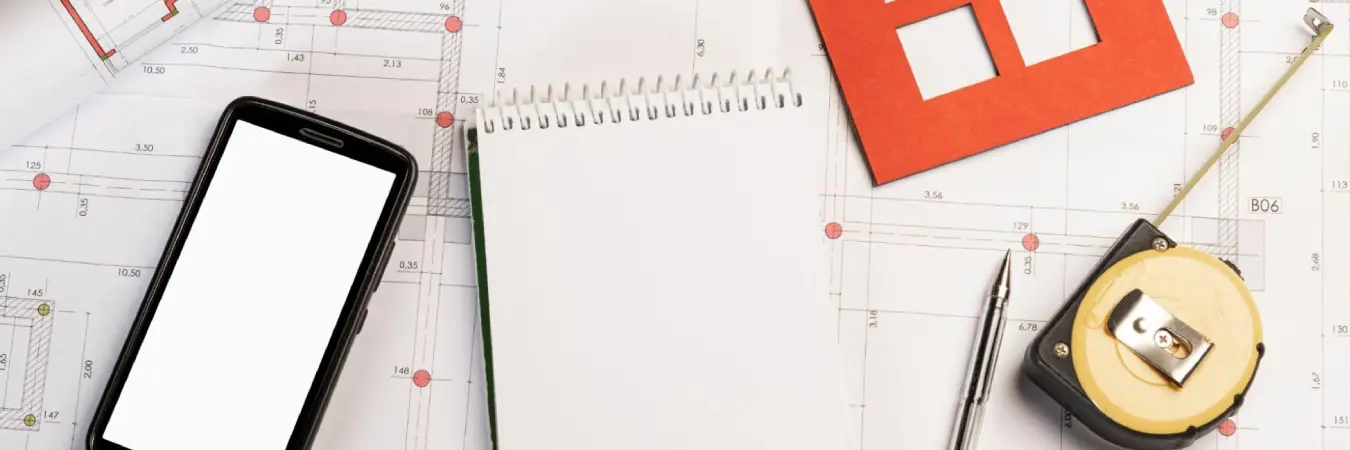What is SRA? Understanding New GR for SRA Carpet Area
Table Of Contents
Mumbai, a bustling metropolis, faces a significant challenge in housing its dense population, particularly the urban poor living in slum settlements. With over half of Mumbai’s population residing in slums, the need for affordable housing solutions is critical. In response, the Government of Maharashtra initiated the Slum Rehabilitation Authority (SRA) schemes in 1995, aimed at transforming the living conditions of slum dwellers. These schemes focus on rehabilitating slums existing as of January 1, 1995, through various redevelopment projects. It’s worth understanding the new Government Resolution for SRA carpet area, which dictates the maximum carpet area that can be allocated to a home that falls under the SRA scheme.
The SRA schemes adopt a unique approach by allowing redevelopment projects in different parts of the city, categorized mainly under on-site schemes, where slums are rehabilitated on the same site, and other schemes facilitating the construction of tenements for Project-Affected Persons (PAP). This initiative not only aims to provide better housing but also to improve the overall living conditions through enhanced physical infrastructure, including water supply, sanitation, and electricity.
The importance of SRA schemes in Mumbai cannot be overstated. They represent a critical effort to address the housing crisis faced by the urban poor, offering a pathway out of unhygienic and cramped living conditions. By focusing on the redevelopment of slum areas, the SRA schemes contribute to the social and economic upliftment of the city’s most vulnerable populations, ensuring a more inclusive and sustainable urban development.
New Government Resolutions for SRA Carpet Area and Its Impact
The maximum carpet area for homes that are categorized under the SRA schemes was actually 269 square feet until 2018, when the declaration of a new government resolution announced that the SRA carpet area would be increased to 300 square feet i.e. 27.88 square metres. There are a number of reasons why the regulations of the SRA carpet area have been so impactful on slum rehabilitation as well as housing development in the city of Mumbai.
Improvement of Living Conditions
The SRA carpet area regulations ensure that the living conditions in rehabilitated housing significantly improve over the cramped and often inhumane conditions found in slum settlements. By setting a minimum carpet area, these regulations guarantee that new homes are not only safer but also offer adequate space for families, contributing to their overall well-being and quality of life. This is particularly important in densely populated cities where space is at a premium, and slum dwellers are at risk of being rehoused in equally cramped conditions without such mandates.
A Better Approach to Urban Development
These regulations encourage a more humane approach to urban redevelopment. They recognize the dignity of all citizens, irrespective of their economic status, by ensuring that redeveloped housing meets basic standards of comfort and livability. This approach helps to integrate slum dwellers into the urban fabric, reducing social inequalities and fostering a sense of community and belonging.
Enhancing Efficiency
The carpet area regulations stimulate better urban planning and development practices. Developers involved in slum rehabilitation projects must now design housing that is not only cost-effective but also compliant with these minimum space requirements. This can lead to innovative architectural and engineering solutions that maximize space utilization and environmental sustainability, setting new standards for affordable housing projects.
Improving Public Health
By improving living conditions, these regulations also have the potential to impact public health positively. Overcrowded and poorly ventilated living spaces are breeding grounds for diseases. The mandated larger living spaces can help reduce the transmission of communicable diseases, improving the overall health outcomes for the urban poor.
How do they Affect Dwellers, Builders, and the Real Estate Market?
Impact on Slum Dwellers
For the residents of slum areas, the new SRA regulations are a beacon of hope. They stand to benefit from improved housing standards, including increased carpet area and better infrastructure facilities, which are crucial for enhancing their quality of life. These changes not only promise a safer and more comfortable living environment but also aim to uplift the socio-economic status of slum dwellers by integrating them more seamlessly into the urban fabric. The move towards formal housing is expected to provide stability and security, reducing the vulnerability associated with slum living.
Impact on Developers
For builders and developers, the revised SRA regulations present both opportunities and challenges. On one hand, they offer the chance to participate in large-scale urban renewal projects, potentially leading to lucrative returns. On the other hand, stricter compliance requirements, including the provision of larger carpet areas, could increase project costs and complexity. Builders will need to innovate and adopt efficient construction methods to maintain profitability while adhering to the new standards, pushing the industry towards more sustainable and responsible development practices.
Impact on the Real Estate Market
The real estate market in Mumbai is likely to experience a significant impact from the new SRA regulations. By facilitating the redevelopment of slum areas into formal housing, these regulations could unlock valuable land parcels for development, potentially easing the city’s chronic housing shortage. However, the increased supply of formal housing units might also lead to market adjustments in terms of pricing and demand dynamics, especially in the affordable housing segment. Overall, the new SRA regulations are expected to contribute to the long-term stabilization and growth of Mumbai’s real estate market, making it more inclusive and sustainable.
Types of SRA Schemes
The Slum Rehabilitation Authority (SRA) in Mumbai implements three main types of redevelopment schemes:
- In-situ Scheme DCR 33(10): Slums are rehabilitated on the same site where they currently exist.
- 33(11) Scheme (PAP): Allows landowners to use vacant land for constructing tenements for Project Affected Persons (PAP), compensated with Transferable Development Rights (TDR).
- 33(14) Transit Schemes: Enables landowners to utilize the existing Floor Space Index (FSI) and additional development potential in various zones of the city.
What are SRA Flats?
An SRA flat is essentially a residential unit that has been provided by the Slum Rehabilitation Scheme. These flats are constructed as part of public-private partnerships, where developers are incentivized with additional development rights in exchange for building and providing these units at no cost to eligible slum dwellers. The goal is to improve living conditions for slum inhabitants by relocating them to safe, hygienic, and permanent homes, thereby integrating them into the urban fabric. SRA flats are a critical component of urban redevelopment efforts, aiming to address housing shortages and enhance the quality of life for the urban poor.
Understanding How SRA Flats Are Purchased
Purchasing an SRA flat involves a detailed process, eligibility criteria, and a number of crucial documents to have in hand to ensure legal compliance and transparency. Here’s a concise breakdown:
Eligibility Criteria:
- Domicile Certificate: Buyers must have a domicile certificate.
- No Existing Property: Neither the buyer nor their family members should own a house within the Brihanmumbai Municipal Corporation (BMC) limits.
- Income Group: Buyers should belong to the Economically Weaker Section (EWS), Lower Income Group (LIG), or Middle Income Group (MIG).
- Ownership Restrictions: The original beneficiary cannot purchase another SRA flat.
Purchasing Process
- Lock-in Period: Ensure the SRA flat has surpassed the 5-year lock-in period.
- Application for Transfer: Obtain and fill the application form for transfer from the SRA office.
- No-Objection Certificate (NOC): Secure an NOC from the SRA and the respective cooperative housing society.
Required Documentation
For the submission of the application these are the various items of paperwork that will be required:
- Domicile certificate
- Income Tax Return (ITR) for three years
- NOC from the SRA
- No-dues certificate from the society
When it comes to the registration of the sale deed, the required documents are listed below:
- NOC from SRA
- Sale deed
- Electricity bill of the seller
- No-dues certificate
- PAN and Aadhaar Card of both buyer and seller
- Share certificate
- Occupancy Certificate (OC) of the property
Final Steps
-
Sale Deed Execution:
Execute and register the sale deed at the Sub-Registrar of Assurances office, paying the applicable stamp duty and registration charges.
-
Submission to SRA:
Submit a copy of the stamped sale deed and application form to the SRA along with the transfer charges.
-
Housing Society Documentation:
Submit the full set of documents to the concerned housing society and pay its transfer fee to complete the ownership transfer.
This structured approach ensures that the legalities of purchasing an SRA flat are thoroughly adhered to, safeguarding the interests of all parties involved.
Case Study: Slum Rehabilitation Scheme Success Story
One of the SRA’s biggest success stories is at the world’s tallest rehabilitation towers at Dhobi Ghat, Mahalaxmi, through a Slum Rehabilitation Authority (SRA) project. This 42-storey development has already provided new homes to around 1,000 families and will eventually accommodate about 16,000 people, offering modern amenities and retail units, setting a new standard for rehabilitation projects. For more details, check out the story below:
https://indianexpress.com/article/cities/mumbai/mumbai-worlds-tallest-rehabilitation-towers-dhobi-ghat-8902550/
FAQ’s
What is SRS in Mumbai?
SRS is an abbreviation for Slum Rehabilitation Scheme, launched by the SRA with the aim of transforming slum areas of Mumbai to help provide better living conditions for slum dwellers.
Can SRA flats be sold or rented out?
It’s important to remember that SRA flats in Mumbai currently come with a lock-in period of five years, a window in which they cannot be sold or rented out. For more information, check out this report published in December 2023:
https://www.hindustantimes.com/cities/mumbai-news/slum-dwellers-granted-five-year-window-to-sell-sra-flats-benefits-2-5-lakh-beneficiaries-101703185666854.html
What is the current carpet area allowed for an SRA flat?
Having been set at 269 square feet until 2018, the current SRA carpet area per the government resolution is 300 square feet i.e. 27.88 square metres.
Conclusion
The Slum Rehabilitation Authority (SRA) schemes represent a transformative approach to addressing Mumbai’s housing crisis, particularly for the urban poor. By increasing the carpet area and implementing various redevelopment projects, these initiatives not only aim to improve living conditions but also foster a more inclusive and sustainable urban development. The success of projects like the world’s tallest rehabilitation towers at Dhobi Ghat exemplifies the potential of SRA schemes to significantly enhance the quality of life for thousands of families, setting a new benchmark for affordable housing in densely populated cities.


